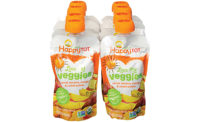A Vision of the Future for Eye-Health Ingredients
Since the eyes are a direct link to the central nervous system in the brain, eye health contributes to overall cognitive and emotional health

The carotenoid astaxanthin, from red microalgae, has proven especially effective in protecting eyesight from blue light damage caused by computers and smartscreens.
PHOTO COURTESY OF: bigstock/AlgaTechnologies, Ltd.

Vitamin A-like lutein is one of the more powerful carotenoids to help prevent eye diseases such as age-related macular degeneration.
PHOTO COURTESY OF: Kemin, Inc.

Red peppers are not only rich in flavor, they’re rich in the eye health ingredient zeaxanthin, another carotenoid compound that protects against age-related macular degeneration.
PHOTO COURTESY OF: OmniActive Health Technologies, Inc.

Eggs are among the most bioavailable sources of the carotenoids retinol, lutein, and zeaxanthin critical for protecting vision.
PHOTO COURTESY OF: American Egg Board

While carotenoids get the most attention for eye health, other nutraceutical ingredients, such as polyunsaturated fats (e.g. DHA) also are vital.
PHOTO COURTESY OF: AAK USA, Inc.

Other antioxidants that help protect the eyes include the tocotrienol form of vitamin E, several hundred times more powerful than the more common tocopherol form.
PHOTO COURTESY OF: American River Nutrition, LLC.






With the increasing populations of aging individuals and persons glued to a screen all day, there’s an equally increasing need for nutritional foods and beverages that address eye health. That need is even more critical considering research revealing that, since the eyes are a direct link to the central nervous system in the brain, eye health actually contributes to overall cognitive and emotional health.
When the cellular and molecular functions of the eyes and CNS are not in good working order, the result is inflammation and oxidative stress, both of which can lead to cell death. As such insults accumulate, the neurodegeneration in the retina and the CNS—shown to be biologically similar—can cascade into other sensory impairments, cognitive deficits, depression, and anxiety.
It is estimated that about 90 million of the 142 million Americans above age 40 are experiencing vision problems, and this population could double by 2050. “For far too long, eye health has received inadequate public health attention, despite good vision being essential to most people’s overall health and well-being,” says Steven Teutsch, former chief science officer for the Los Angeles County Department of Public Health.
Natural look
Food, beverage, and dietary supplement companies with visionary goals are in the ideal position to easily fulfill the need to improve the general eye and vision health. The Age-Related Eye Disease Studies (AREDS2) and other nutrition studies point to specific nutrients–vitamin C, E, beta-carotene, copper, lutein, zeaxanthin, zinc–that reduce the risk of vision impairment and progressive loss.
Although most nutraceutical products continue to focus on these micronutrients, research is evolving on other nutrients that benefit eye health. One example is pure concentrated lutein from marigolds. Such supplemental carotenoids targeting AMD have proven safe and effective aids for protecting vision naturally.
According to the AREDS2 trials, which set the standard for vitamin formulations to reduce the risk of Age-Related Macular Degeneration (AMD), “The high levels of vitamins and minerals are difficult to achieve from diet alone.”
That said, people who consume a diet rich in leafy greens and dark green vegetables do have a lower risk of developing AMD. As is the case with several key nutrients, the National Health and Nutrition Examination Survey (NHANES) shows that for most Americans, daily consumption is only 1-3mg of lutein and zeaxanthin, far below the 10mg needed for healthy vision and protection from AMD.
Astaxanthin has gained considerable attention recently for its contribution to eye health. The powerful antioxidant can help combat the insults of sunlight, artificial light, pollution, and allergens, as well as the strain from retina-damaging blue light generated by computer and smart device screens. These all cause oxidative stress by creating reactive oxygen molecules known as “free radicals” that damage cellular DNA and cellular bodies.
Among the lipid-soluble pigments found in red-, orange-, and yellow-colored plants called carotenoids, astaxanthin’s value to eye health can’t be overstated. As one of the most powerful of natural antioxidants, astaxanthin provides stronger light absorption across broader wavelengths—especially blue wavelengths—than other carotenoids. Multiple research studies support astaxanthin’s ability to protect the retinas from light-induced damage, especially in combination with other carotenoids.
Beyond carotenoids
Fat-soluble nutrients other than carotenoids, such as vitamin D, also are important for eye health. In a study of 2,146 participants with early or intermediate to advanced AMD disease and neovascular disease (leakage and/or neovascularization from retinal vessels), researchers concluded that a diet rich in vitamin D could help prevent or delay progression to advanced AMD and neovascularization.
In recent years, docosahexaenoic acid (DHA) has emerged as a vital contributor to eye health. It makes sense when you know that DHA is abundant in the CNS and the retina. Cutting-edge research shows that when DHA converts to eicosapentaenoic acid (EPA), the cycle eventually generates very long-chain polyunsaturated fatty acids including omega-3s, known as VLC-PUFAs,n-3.
The oxygenated derivatives of VLC-PUFAs define a new class of lipid mediators biosynthesized in human retinal pigment epithelial (RPE) cells called elovanoids (ELV). It is believed that ELVs sustain photoreceptor cell integrity and reveal potential therapeutic targets for retinal degenerations.
Berries and botanicals
The darker the fruit, the richer it is in eye-health boosting compounds, from carotenoids and anthocyanins to vitamin C and, in plants such as annatto seeds and red palm fruit, the especially strong antioxidant form of vitamin E, tocotrienol. Tocotrienol is several hundred times more effective an antioxidant than the tocopherol form of vitamin E.
Among the dark red and purple berries, blueberries, aronia berries, and elderberries (sambuca) have been trending recently. But bilberries, known mostly for their colorant capacity, are gaining increased notice. Bilberries contain some 15 types of anthocyanin compounds, and a recent study revealed that bilberry extract could help protect eyes from damage by computer screens and similar devices. Another study showed that bilberry extract can overcome and even possibly relieve eye strain from prolonged use of visual display terminals.
The effectiveness of cannabinoid compounds in mitigating the symptoms of glaucoma essentially opened the door to the move toward legalization of cannabis and its extracts. But other botanicals known for other benefits are being eyed for their contributions to ocular health.
Gingko biloba, for example, is rich in dozens of bioactive compounds (mostly flavonoids and terpenoids) and has demonstrated a capacity to improve nitric oxide levels, thereby leading to vasodilation and increased blood flow. This could help lower the risk of retinal degeneration, in light of a study that showed that intake of a gingko extract increased ophthalmic artery end-diastolic velocity in glaucoma patients after only two days.
Saffron, the subject of scores of studies for a laundry list of health benefits, including alleviating depression, has exhibited potential as an eye health ingredient as well. Results of studies on volunteer subjects revealed that, compared to lutein or zeaxanthin alone, saffron was able to significantly diminish the effects of neurodegeneration due to oxidative stress and inflammation.
Despite the abundant need for products that address eye health, dietary supplements remain the king of the category. There are opportunities for innovation in food and beverages to boost consumers’ eye health. When considering eye health formulations, many of the essential eye health components are from vibrantly colored natural ingredients that have functional nutrient values and are natural colorants. These include marigolds (lutein), tomatoes (carotenoids, especially lycopene), and pomegranates and berries (anthocyanins).
Kimberly Lord-Stewart is a content strategist and developer, and director of the industry consulting group, Eating Between the Lines, LLC. With degrees in technical journalism and health sciences, she has been writing and editing on food science and nutrition for more than 20 years and is the author of “Eating Between the Lines” (St. Martin’s/Griffin Press, 2007). Contact her at eatingbetweenthelines@gmail.com.
Look in the Eye
The eye is an incredibly complex organ, made up of multiple parts and composed of many layers and types of tissues. The cells of the eyes are highly sensitive to oxidative assault because of their high concentration of mitochondria and the high turnover of photoreceptors.
Eye on the gut
A lesser-known aspect of eye health is its relationship to the gut microbiome. Fibrous nutrients, like resistant starches and their resulting short-chain fatty acids (SCFAs), are well-known to reduce the risk of inflammation in the gut. There is evidence that they also reduce systemic oxidative stress, which is an established etiologic mechanism for retinopathy. Even compounds produced in the gut, such as the hormone serotonin, have been associated with reduced eye disease severity via the gut-retinal axis. So far, the food, beverage, and dietary supplement industries have yet to open their eyes to the opportunities these recent findings present, but that could soon change.
Looking for a reprint of this article?
From high-res PDFs to custom plaques, order your copy today!












